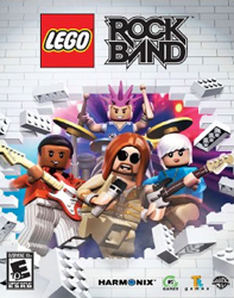|
Release: 2009
Platform: Xbox 360, Playstation 3, Wii, DS Studio: Harmonix, Traveller's Tales, Backbone Entertainment Publisher: Warner Bros, MTV Games legorockbandgame.com |
Developed as a family-friendly installment in the series, Lego Rock Band built upon this theme, with a growing UX team, and younger playtesters.
The game's core mechanics were established in Rock Band 2, but aimed a new market— children as young as six. As with Unplugged, primary development was handled by third party studios, while creative direction remaining in-house. Internally, we were working on the Beatles game, so I took on my first assistant to handle playtesting of Lego's balancing and difficulty ramp. I was lucky to find someone who had a great attitude, friendly demeanor, and highly analytical mind, though no prior experience running player research. Luckily, research is the easiest of those skills to teach. Walking through the team's goals with a new member created an opportunity to reflect and improve upon our methodologies, as well as expand the scope of what the department could offer. This experience set the template for every researcher and intern who would later join our department, each bringing fresh eyes and experience to how we handled our work. My contributions included...
Typical design questions
|
